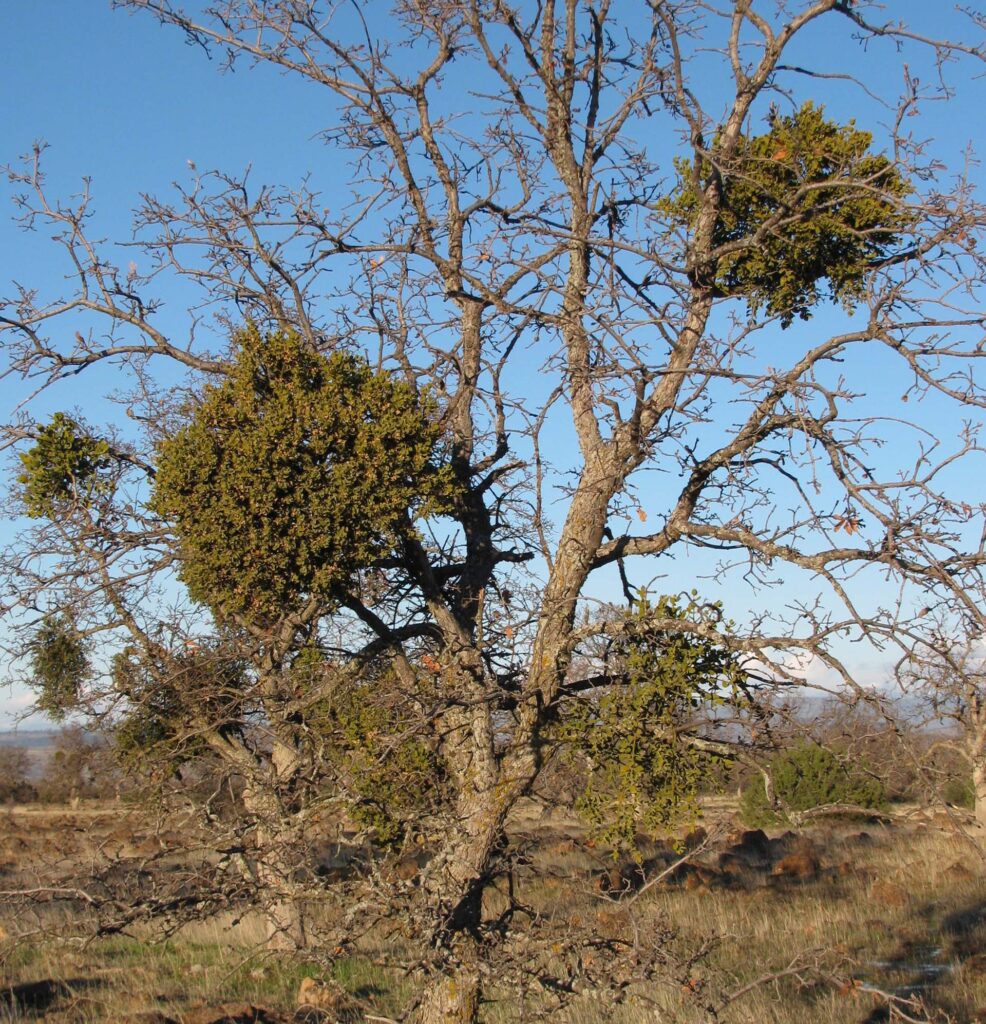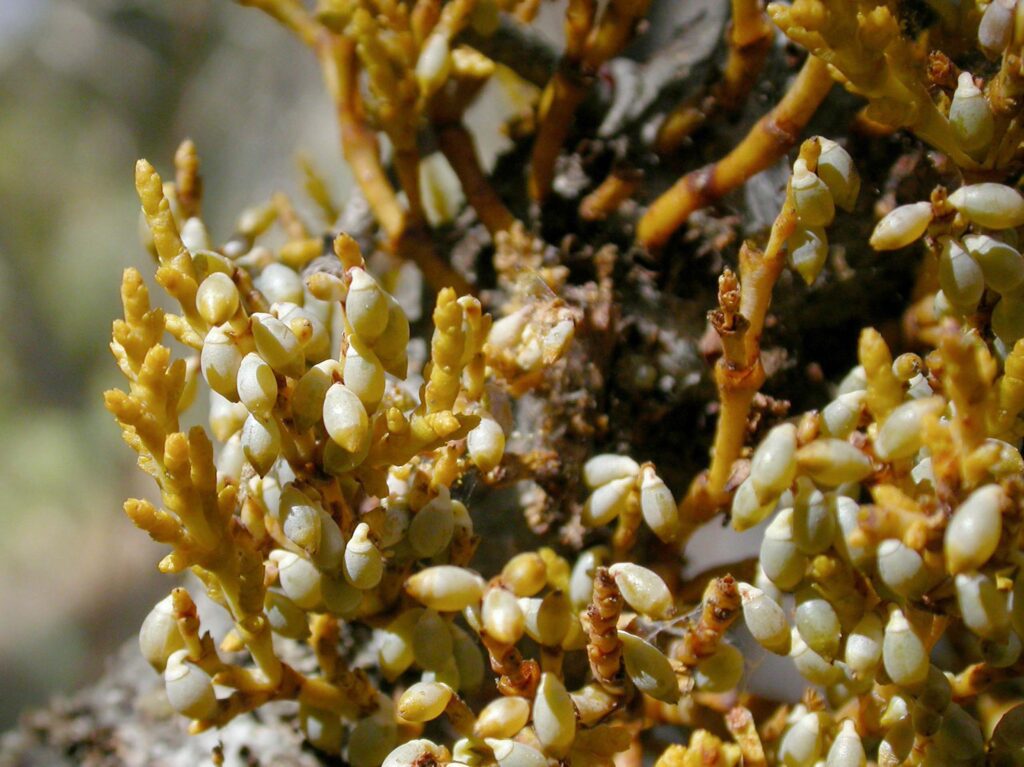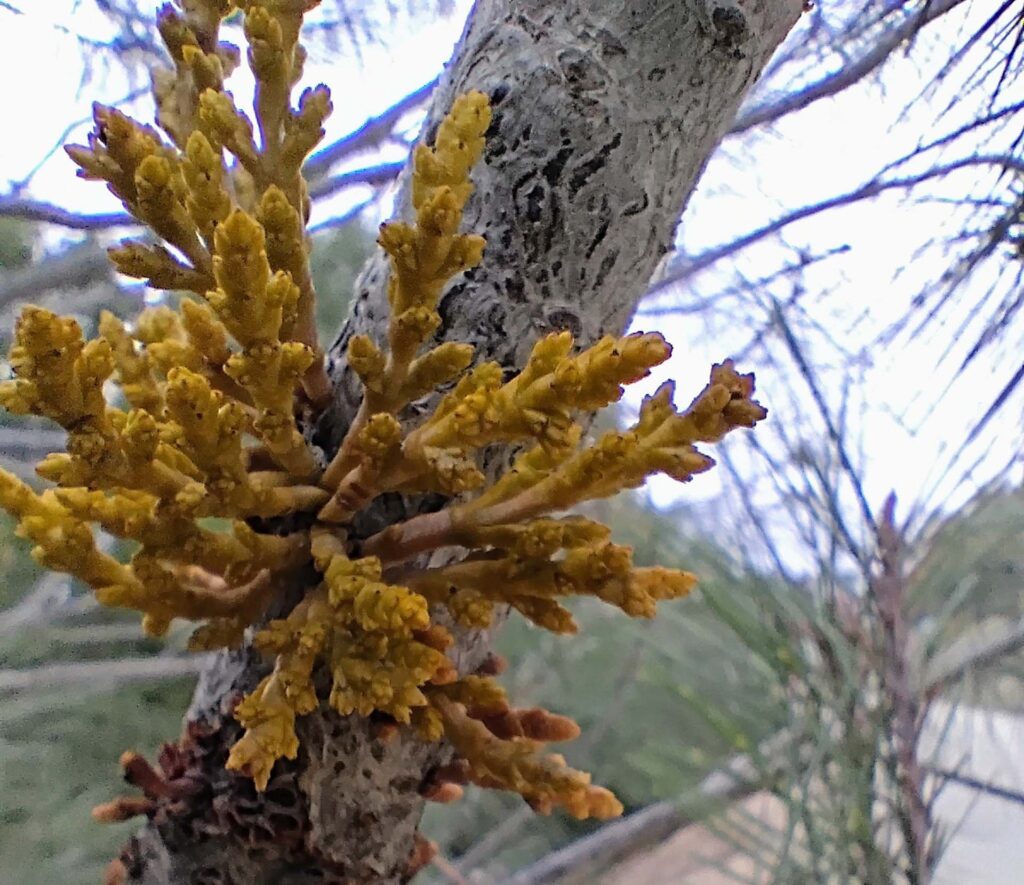
Photo taken November 29, 2024, by David Ledger.
Western dwarf-mistletoe (Arceuthobium campylopodum) is a parasitic plant that infects conifers, primarily pines, and is common throughout California. It is a perennial plant that can be yellow, orange, brown, or olive green. Its branches grow up to 8 inches long, with scale-like leaves about 1/8 inch long.
Western dwarf-mistletoe takes all of its water, minerals, and food from its host tree, as it cannot produce its own food through photosynthesis. The mistletoe has root-like haustoria that grow into the tree limbs and enter the water-conducting cells and the tissues that contain sugar and proteins produced by the tree needles, resulting in a telltale swelling of the branch. This method of acquiring nutrients is unlike that of the common oak mistletoe (Phoradendron leucarpum) found in many valley and blue oaks, which has broad green leaves, produces its own food through photosynthesis, and only takes water and mineral nutrients from its host tree. Oak mistletoe usually does not kill the host tree.

Photo taken December 15, 2010, by Jay Thesken.
Dwarf-mistletoe has a unique seed-dispersal system. Its fruits, which are dark purple to brown, will explode when ripe and project their seeds 50 feet or more into the air. If a seed lands on a branch, it will stick and germinate when it rains. As this process repeats itself every year, an infestation can eventually kill the tree and spread to other nearby trees. If you are lucky enough to find some low-growing ripe fruits, hold them in your hand for a short time—the fruits may explode due to the change in humidity and heat, leaving you with a wet and gooey hand.

Upon germinating, dwarf-mistletoes produce haustoria that penetrate the tree limb; several years later, the mistletoe stems will emerge from the limb of the host tree. In some cases, the haustoria will spread throughout the wood of the limb and block nutrients and water from reaching the needles of the host tree, which will often kill both the tree branch and the mistletoe. If enough branches are infected, the whole tree can be weakened or killed. I have seen groves of gray pines in which half of the trees are dead or dying from dwarf-mistletoe infestations.
Dwarf-mistletoe was once considered to include 14 or more different species, but some research has shown that a single species may affect different conifers in a different manner; however, there is considerable disagreement among mistletoe taxonomists. The Jepson Manual lists only three species (western, American, and Douglas). Other floras describe more species and/or subspecies based on the particular conifer on which the dwarf-mistletoe is growing.

Photo taken November 29, 2024, by David Ledger.
Western dwarf-mistletoe affects ponderosa pines by producing witch’s brooms, which are thick, jumbled masses of pine needles and stems at the end of a branch, sometimes many on a tree. The infestations don’t seem to kill the trees outright unless the trees are young. Some witch’s brooms in ponderosa pines are instead caused by a pathogen that affects a growth hormone in the tree. I usually need to use binoculars to determine if the witch’s broom was caused by dwarf mistletoe or the pathogen (branches infected with dwarf-mistletoes are usually swollen at the infection point). Pre Carr Fire, you could occasionally find ponderosa pines with witch’s brooms in Whiskeytown National Recreation Area. There are a few infestations of western dwarf-mistletoe on gray pines near Muletown Road, Redding, that didn’t burn during the Carr Fire.
In red and white firs, there seems to be a race between the tree and the mistletoe. Few mistletoe seeds land on higher branches, so the tree may be able to outgrow the spread of mistletoe. Western dwarf-mistletoe on red and white firs may be seen in Lassen Volcanic National Park. Infected lodgepole pines can also be seen in the Park, but these are caused by American dwarf-mistletoe (Arceuthobium americanum). ~David Ledger
